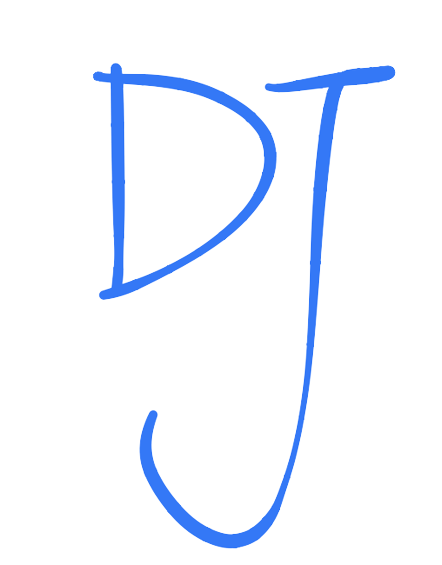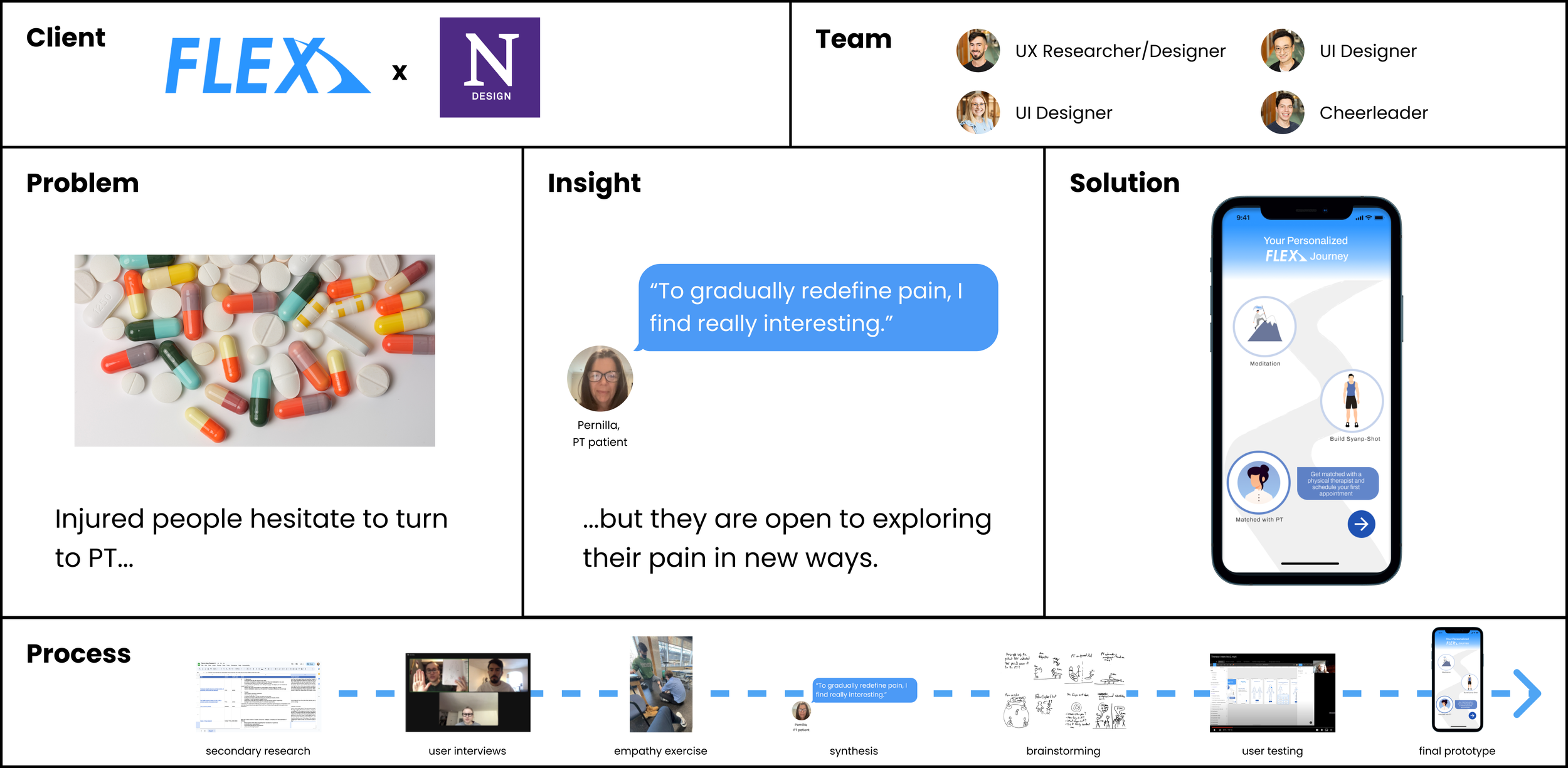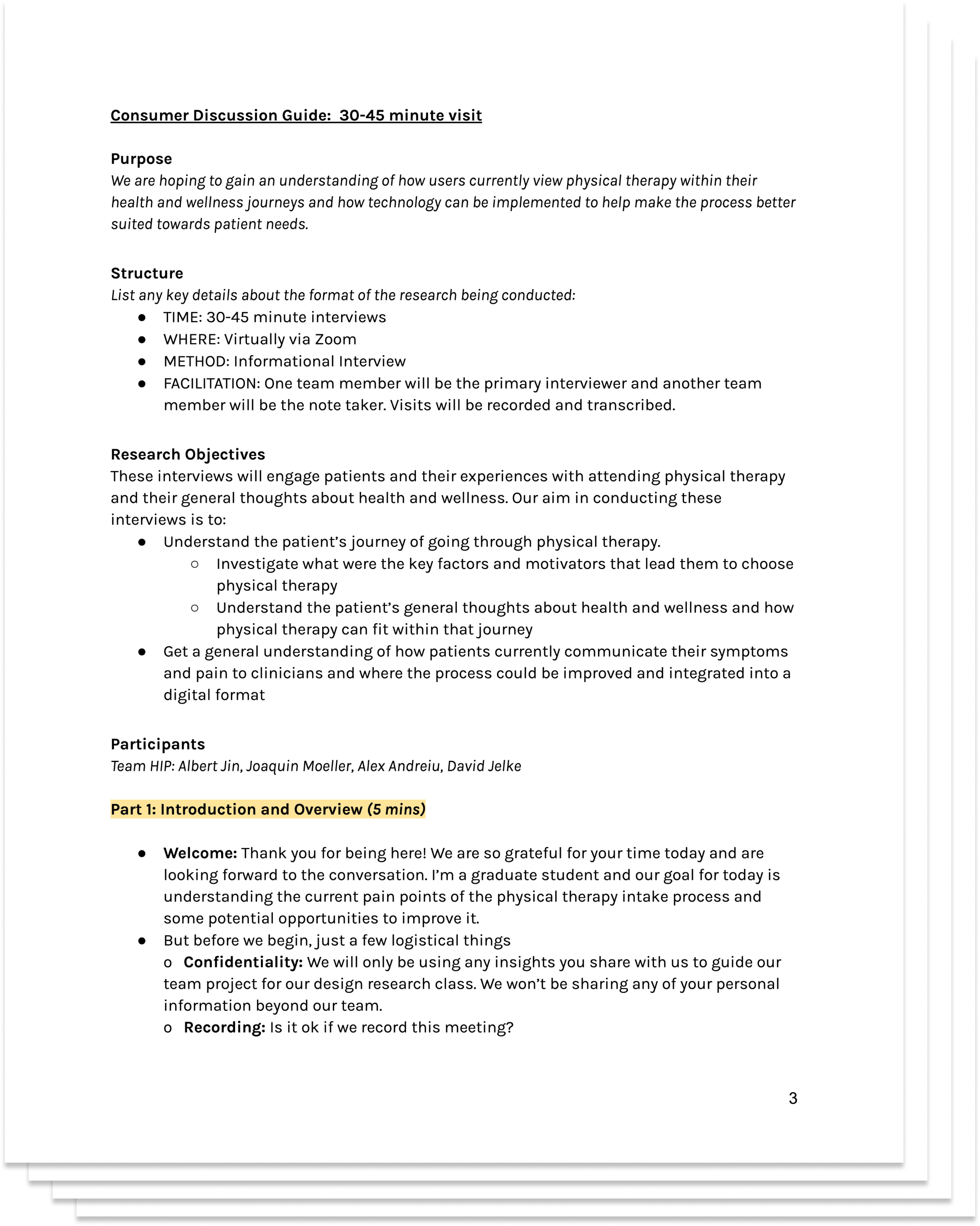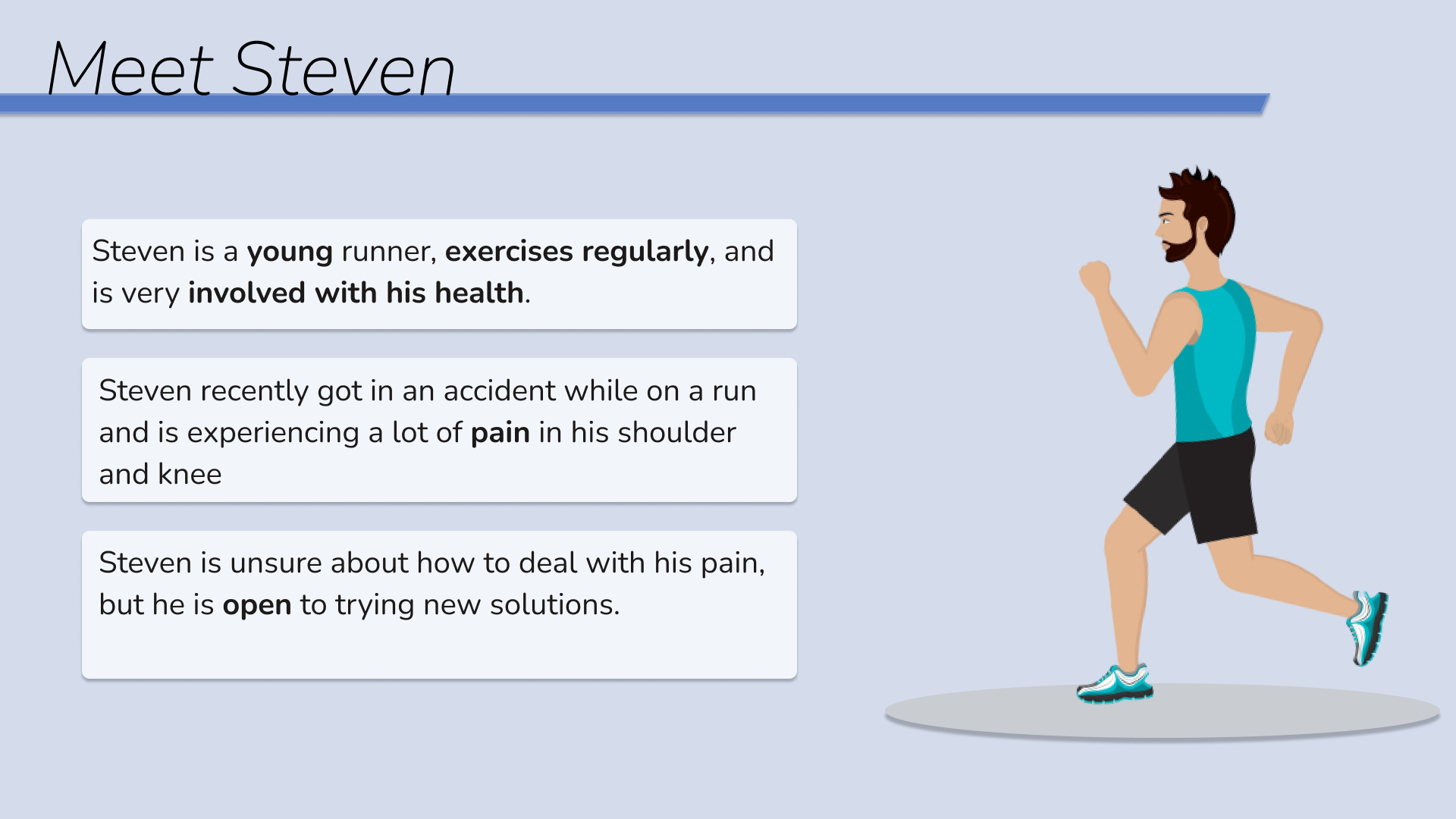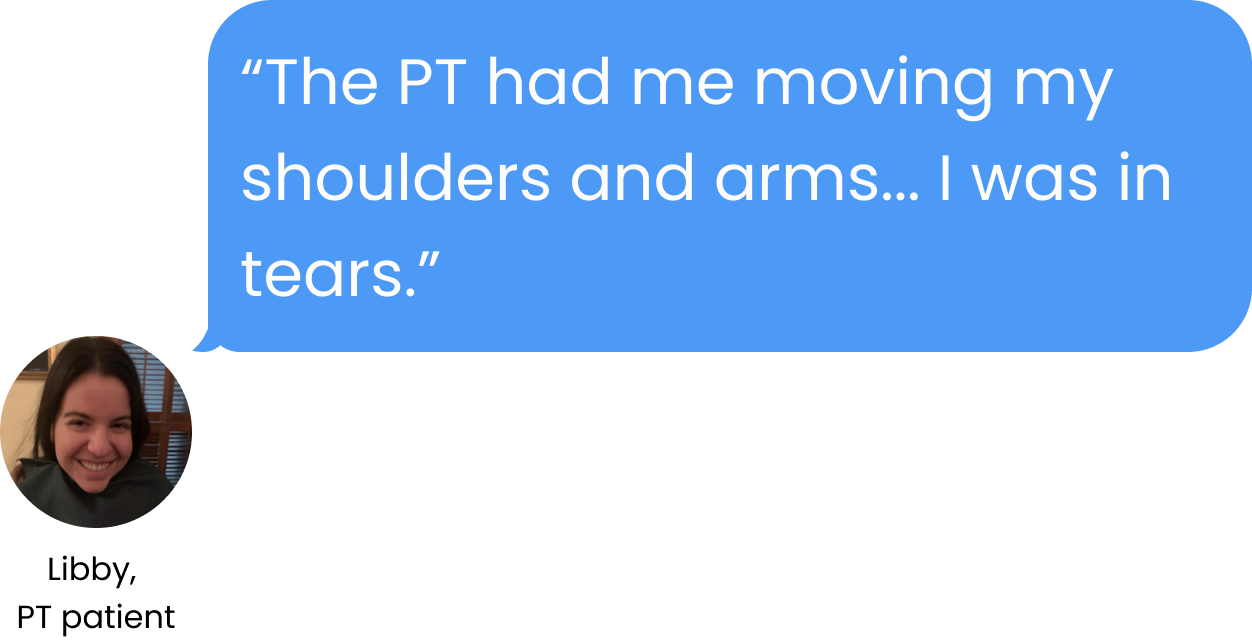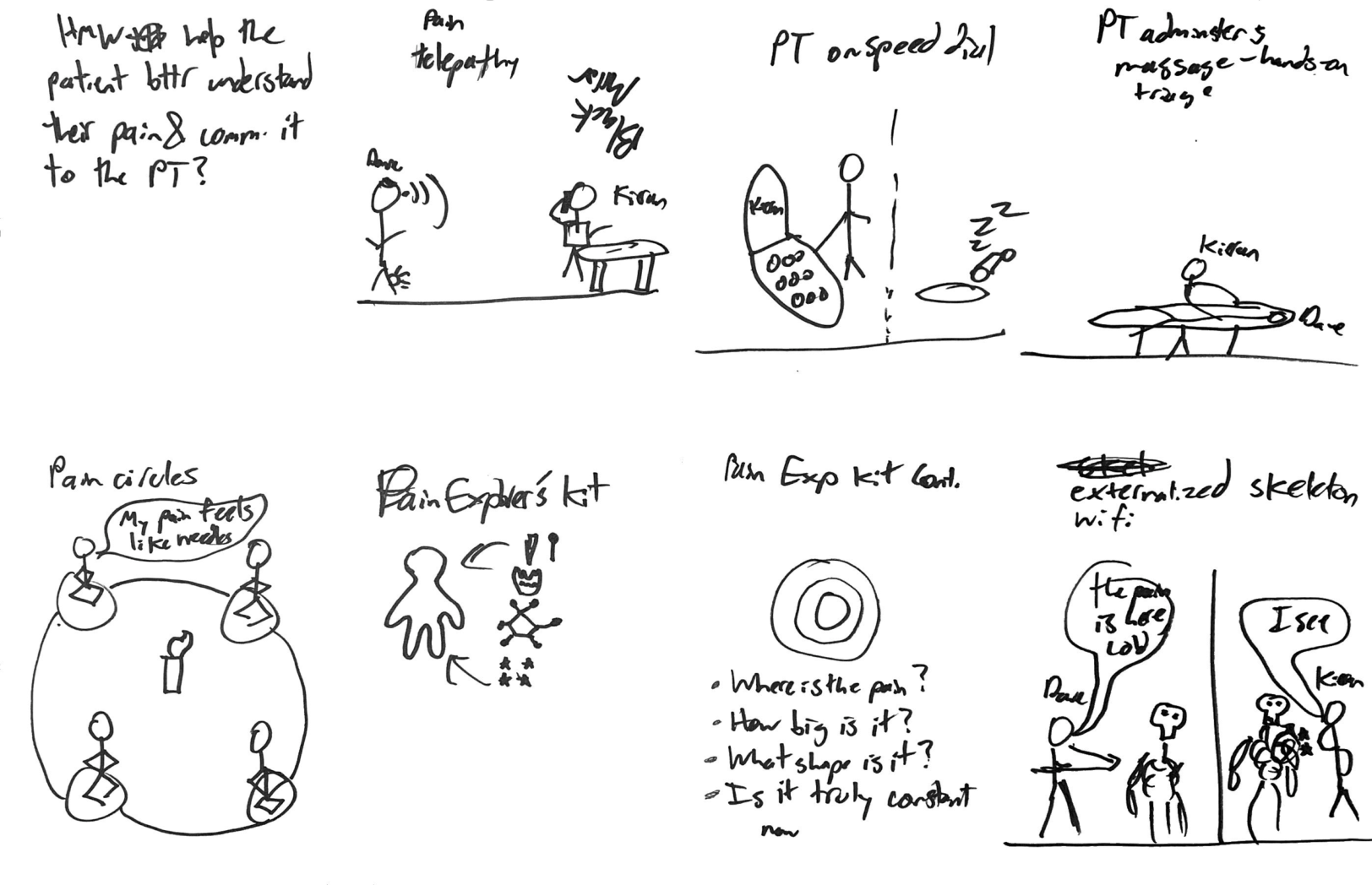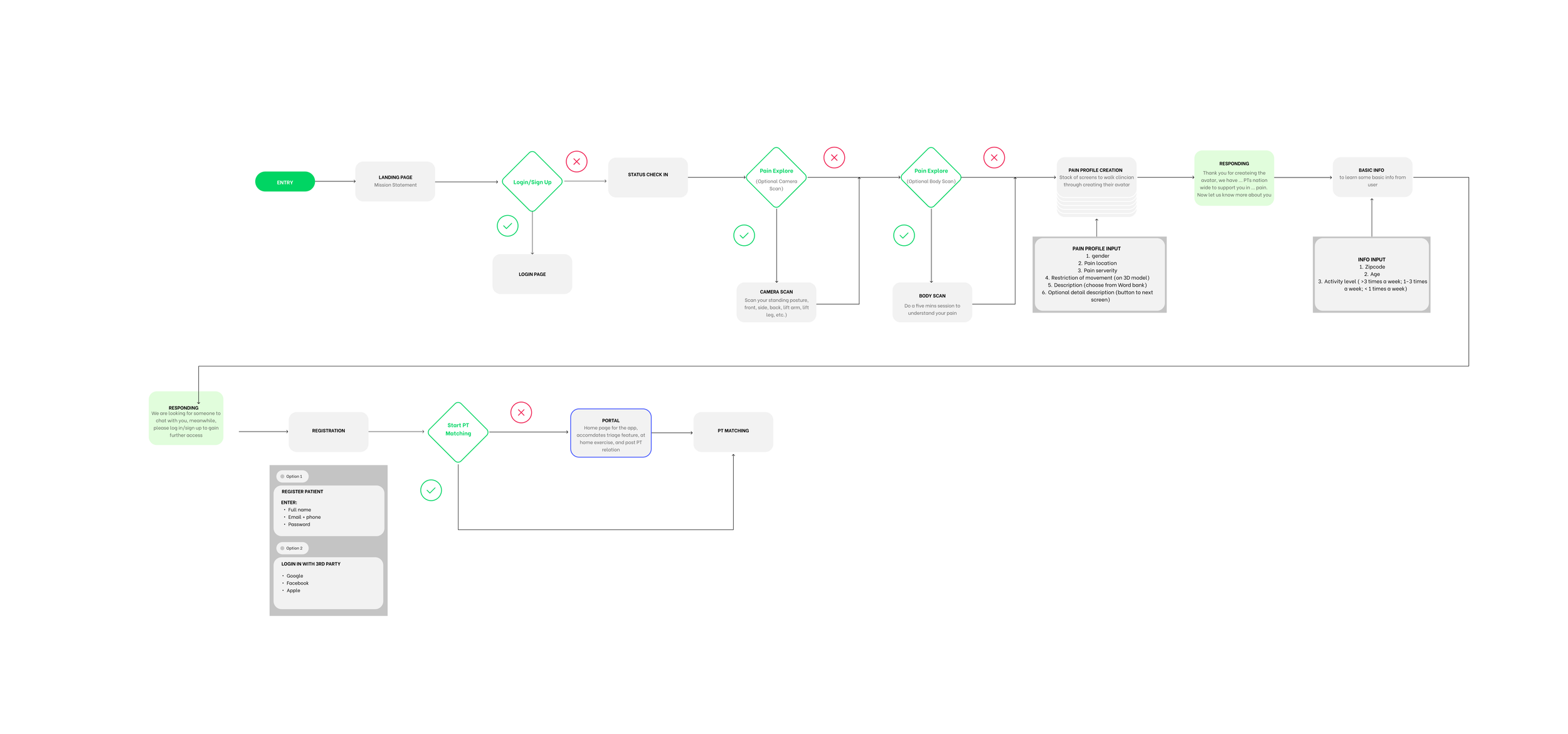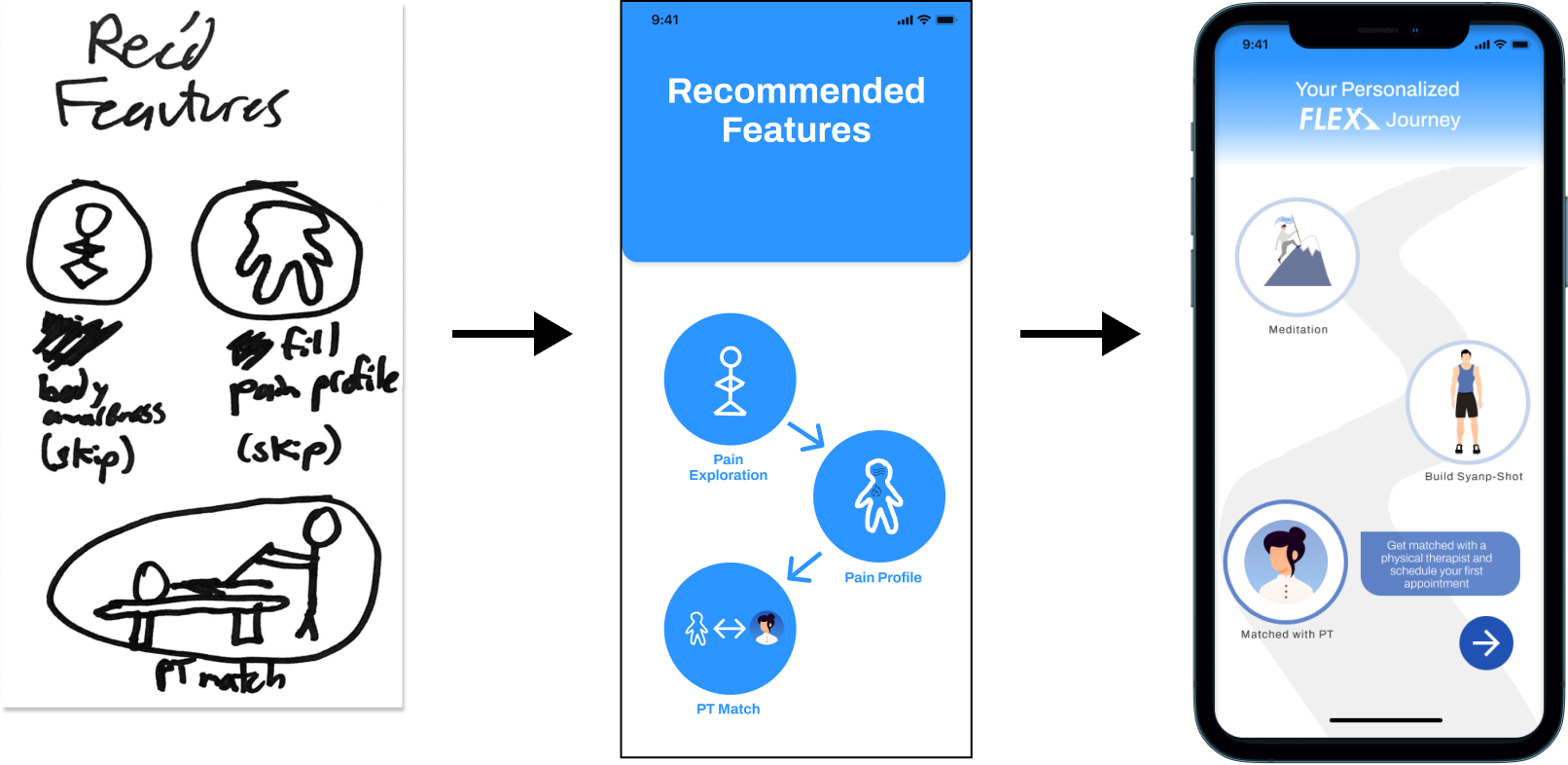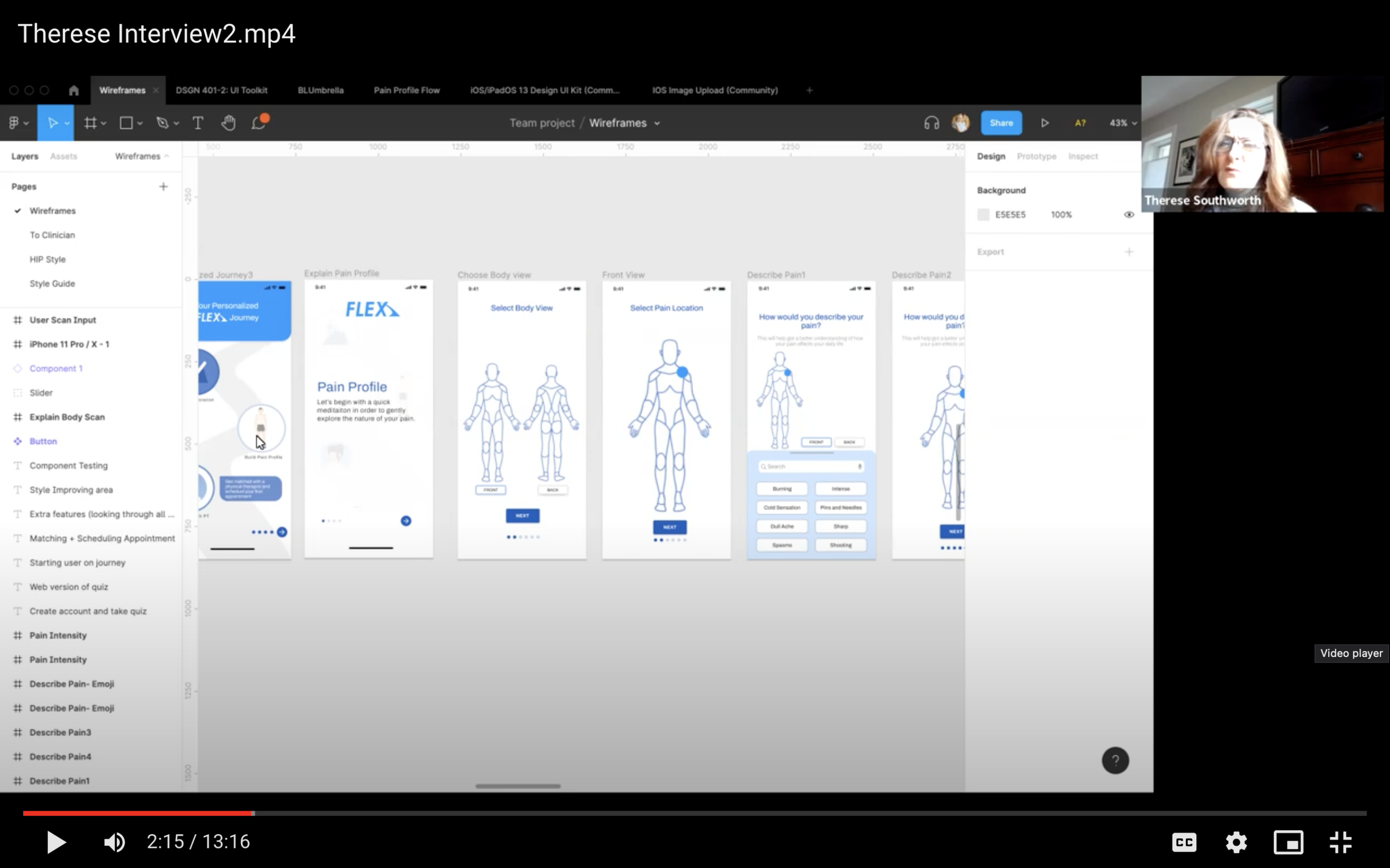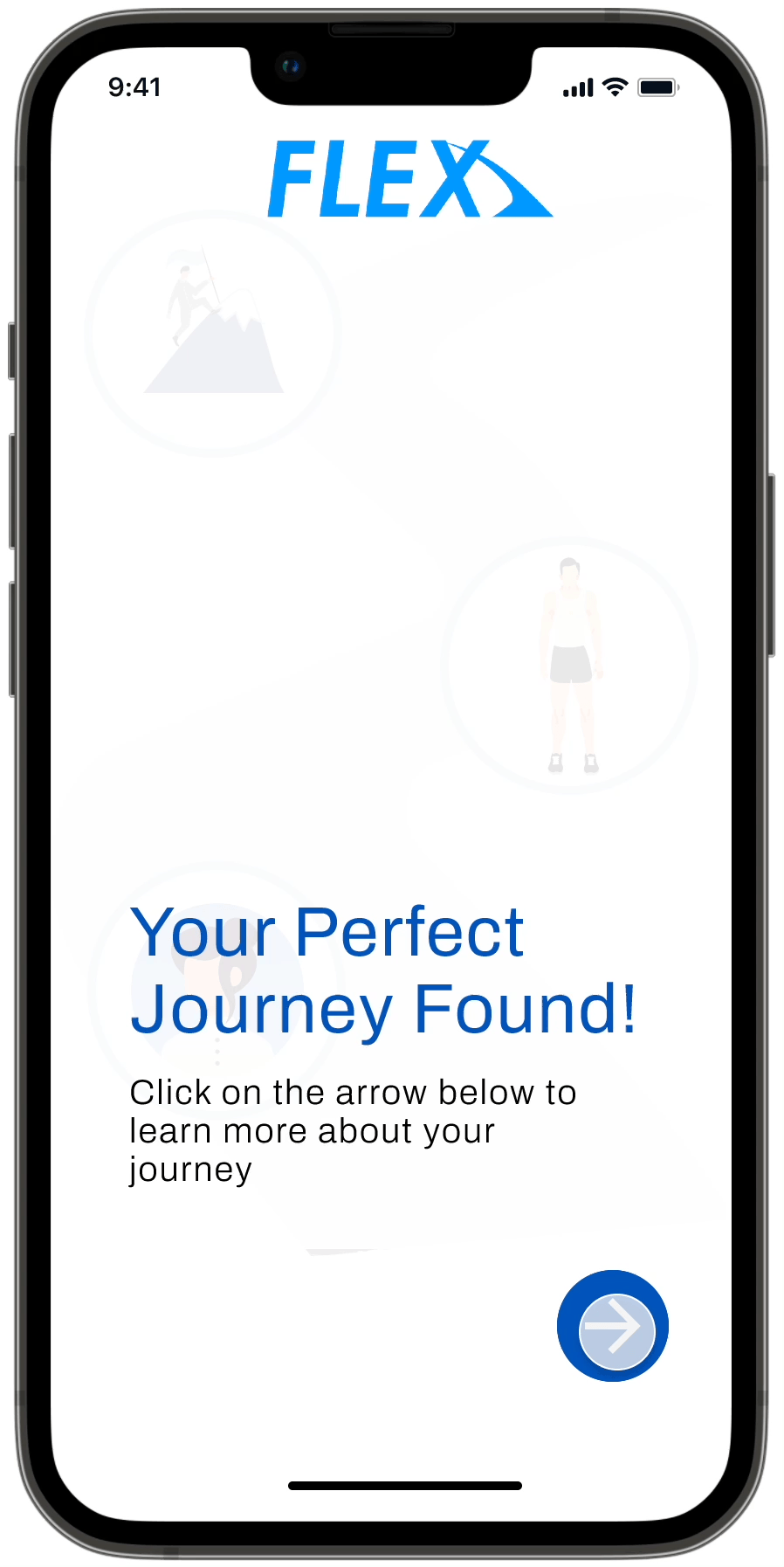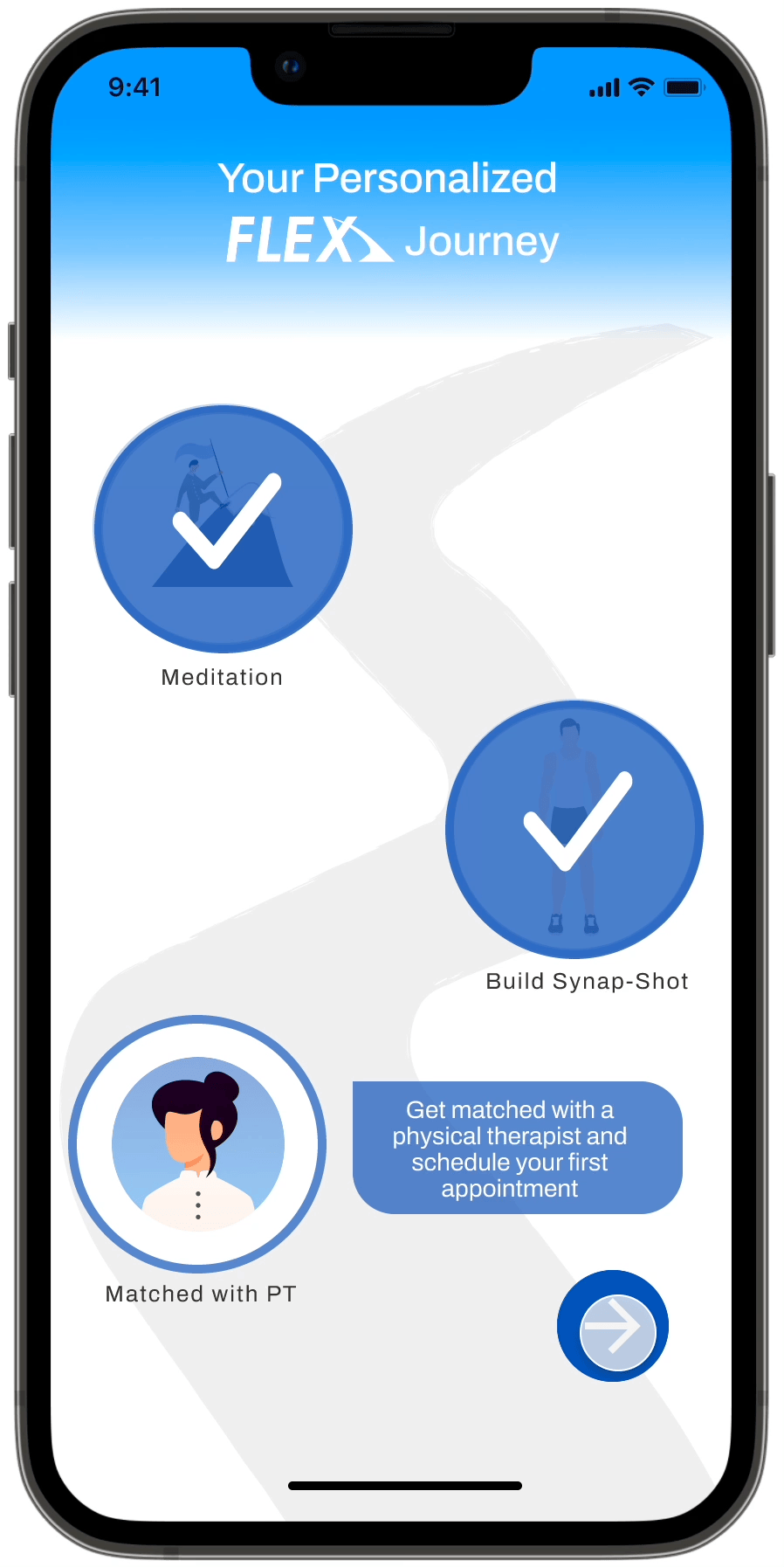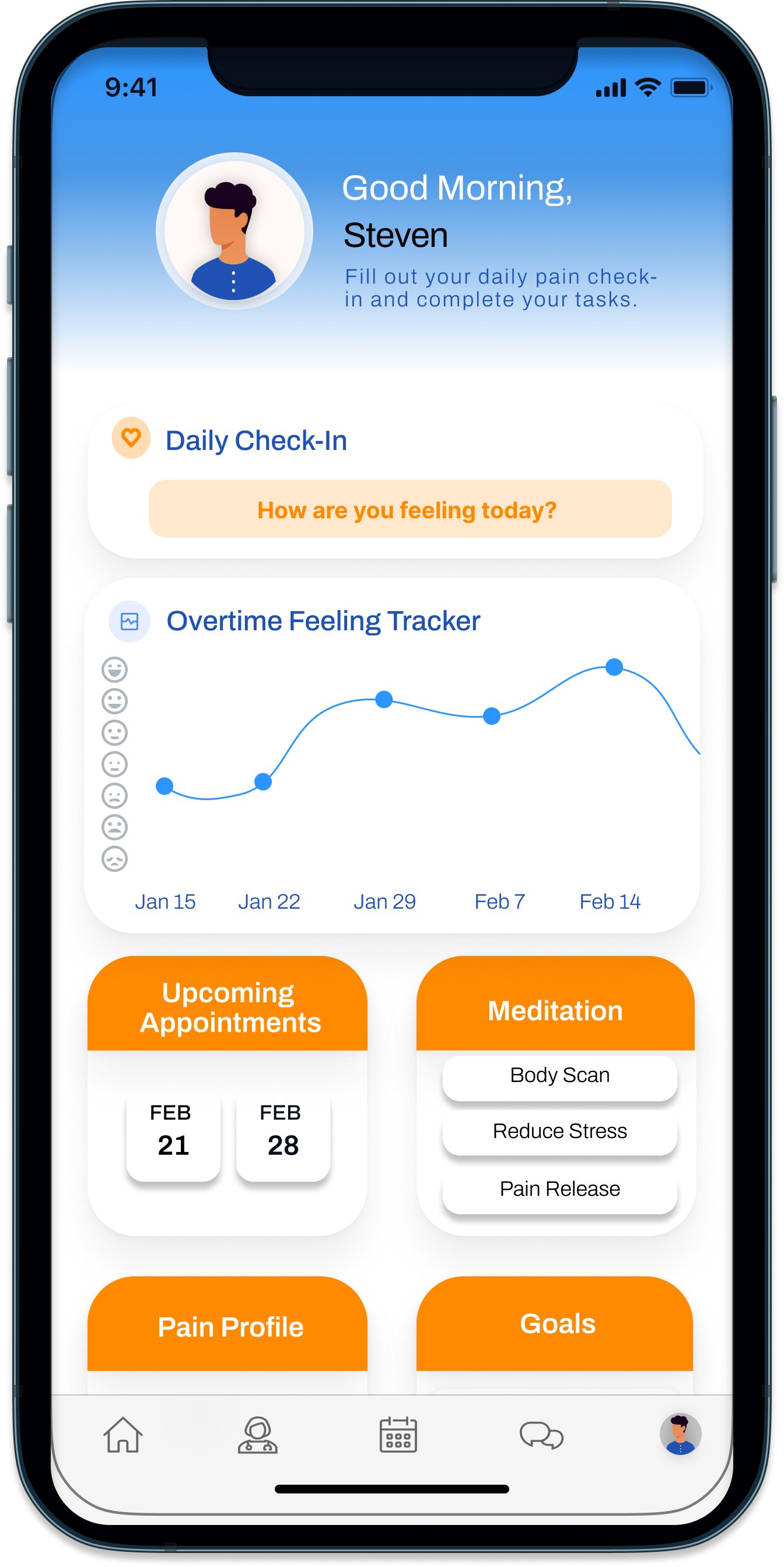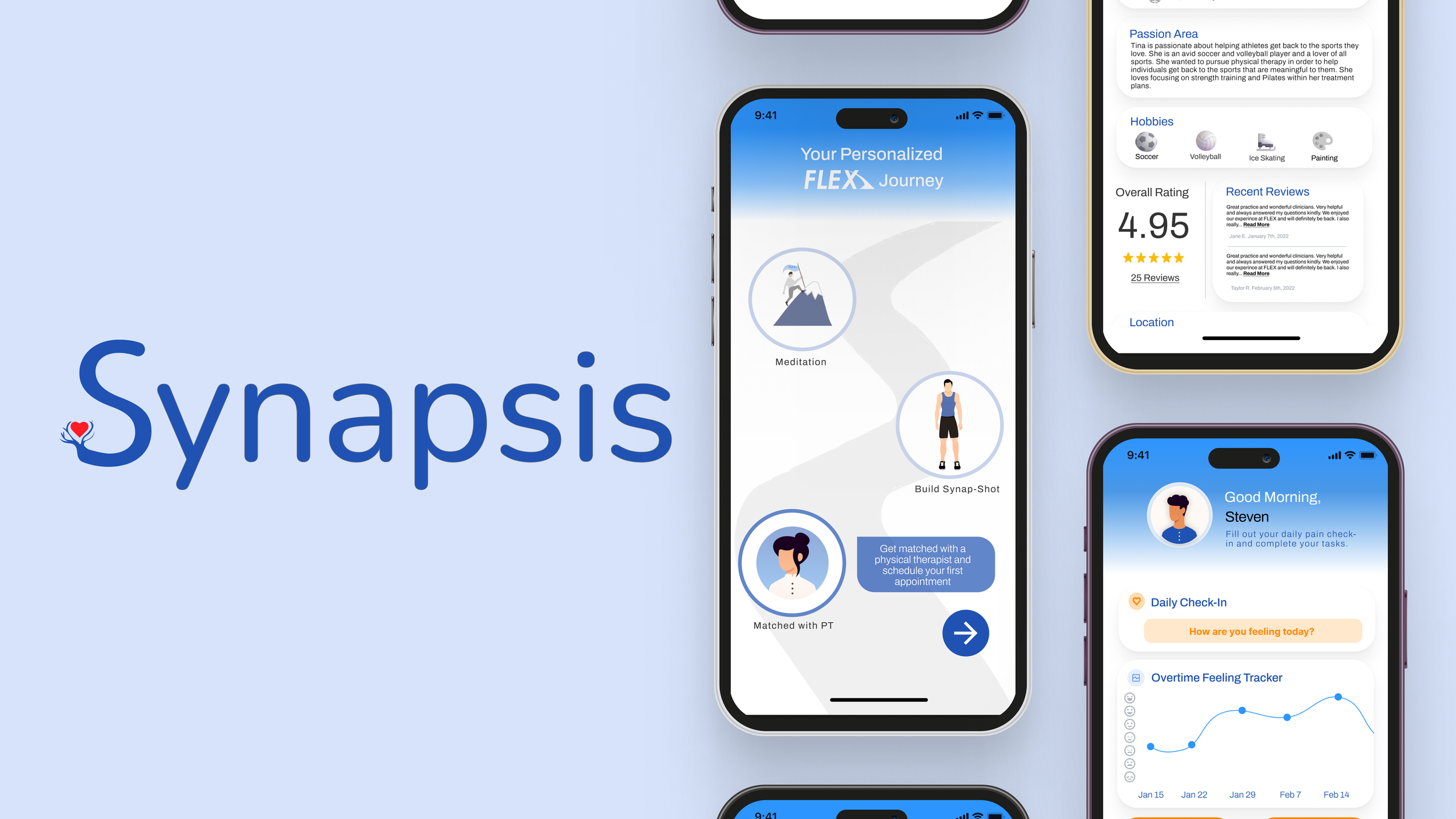
Overview
Problem
54%
of Millenials avoid going ot the doctor even if they need to. And when they do, it’s very unlikely it’s a physical therapist.
Secondary Research
Our team scoured articles, advertisements, and market research to get a better understanding of consumer behaviors and where our clients were positioned in the wellness landscape.
Discussion Guide + User Interviews
Our team created a discussion guide and interviewed five PT patients in order to better understand pain points in the onboarding process.
User Journey Map
Our team created a journey map framework to chronologically understand and share what we learned from a first-person perspective.
Persona
Our team interviewed five PT patients in order to better understand pain points in the onboarding process. We found that patients find it very difficult to put their pain into words for their doctor.
Empathy immersion
I went undercover and participated in the PT onboarding process myself (for a real ankle sprain that I had and was thinking about treating anyways). The clients’ PTs were very helpful and professional, but I felt firsthand the friction of scheduling an appointment by phone and filling out pages of often redundant paperwork.
Insight
1. Injured people are open to exploring their pain in new ways
2. Users feel confident when they successfully communicate their pain
3. The personality match between patient and PT matters
How might we reimagine the PT onboarding experience to be more exploratory, tangible, and collaborative?
Crazy 8s
To begin flexing the creative muscle, we played Crazy 8s, where we challenged ourselves to sketch 8 ideas in 8 minutes. Some of the ideas actually made their way into the final prototype.
User Flow
We then took the features we settled on and mapped them onto screens and determined how we wanted users to navigate through those screens.
Rapid prototyping
Our team began with rough sketches, then low-fi wireframes, and then high-fidelity, interactive prototypes.
User Testing
Overall, we spoke with two clinicians to get feedback on our designs. Feedback reinforced our approach of making PT feel friendlier and underscored the importance of patients keeping track of their progress.
Solution
We designed Synapsis, an app that takes users on a journey of self-discovery that sets them on the road to recovery. Synapsis features a user flow with three main experiences: pain meditation, Synapshot, and PT matching.
Pain Meditation
To address the insight regarding the redefining of pain, our team designed a meditation experience that allows the user to gently explore the felt sensation of their pain. This feature helps the user become familiar with and less avoidant of their pain and therefore more likely to seek out a PT.
Synapshot
Synapshot is a feature that builds on the meditation and takes a “snapshot” of your pain, saving the patient from having to complete potential onboarding paperwork in the future. Users tag parts of their body with the quality of the sensation they feel and indicate an intensity level.
PT Matching
Matching helps patients see available PTs at a glance and book an appointment with them. User can see reviews and read a little bit more about a PT’s life to facilitate a more personal connection with their therapist.
Progress
Incorporating feedback from user testing, we prototyped a screen that shows how the user’s pain improves over time, both before and during treatment. This helps the user build momentum and feel rewarded by their engagement.
Under the hood
What I learned
Team makes the project.
Experience the user’s journey map as early as you can.
Chronic pain can be a very private phenomenon. Make sure to be respectful and discrete.
People are a lot more open to trying meditation than I thought.
Rehearse the final presentation multiple times and not on the day of.
If I had more time, I would have spoken to more clinicians to understand their struggles and what needs to be done. Due to scheduling difficulties, we were not able to speak to many clinicians and only until we approached the end of the design phase.
